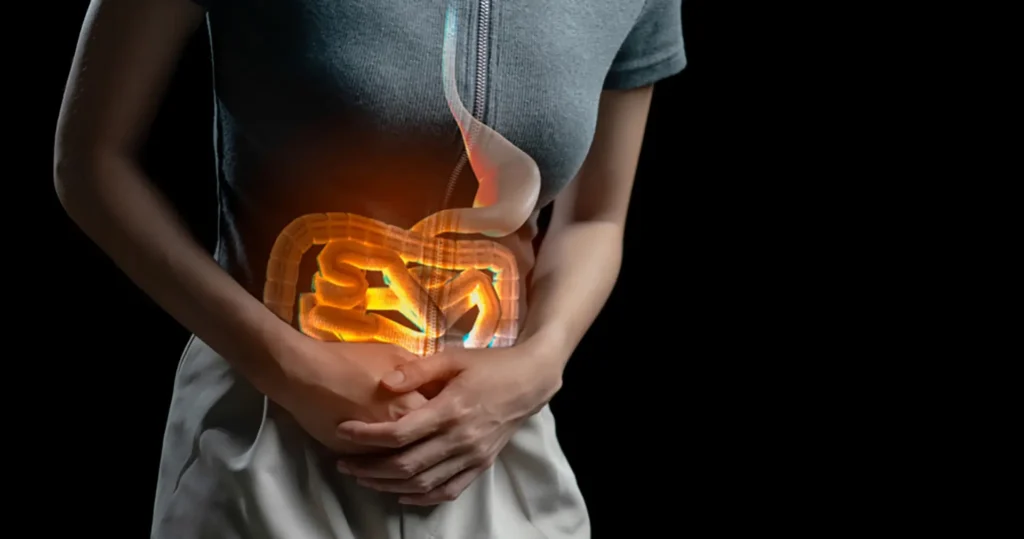Introduction to Virechana
Virechana, or therapeutic purgation, is an important purification technique in Ayurveda that aims to eliminate excess Pitta dosha from the body. Virechana, one of the five core Panchakarma therapies, is essential for detoxifying the body, restoring dosha balance, and promoting overall health. According to Ayurveda, an ancient Indian medical system, Virechana is a powerful procedure for cleansing the body of toxins (Ama) and maintaining the digestive fire (Agni), both of which are necessary for optimal health.
The ancient Ayurvedic texts, such as the Charaka Samhita and Sushruta Samhita, go into great detail about Virechana, emphasising its therapeutic benefits and the precise methodology required to perform it successfully.
Understanding Ama and Cellular Health
In Ayurveda, ama refers to the toxic byproducts of improper digestion and metabolism. When the digestive fire (Agni) is weak, food is not digested completely, resulting in the formation of Ama. This toxic substance can circulate throughout the body, accumulating in different tissues and organs, clogging the body’s channels (Srotas), and interfering with normal cellular function.
Ama inhibits cellular respiration, nutrient absorption, and waste elimination. This can cause cellular stress, inflammation, and eventual tissue degeneration. Ama accumulation has been linked to a number of chronic conditions, including metabolic disorders, autoimmune diseases, and degenerative diseases.
The Role of Virechana in Cellular Detoxification
Virechana is specifically designed to eliminate excess Pitta and Ama from the body, especially from the liver, intestines, and other Pitta-dominant areas, which is responsible for heat, metabolism, and transformation in the body. A Pitta imbalance can cause a variety of disorders, including skin diseases, liver problems, acid reflux, ulcers, and inflammatory conditions. Virechana facilitates the expulsion of these toxins by inducing therapeutic purgation at both the organ and cellular levels.
Virechana is particularly recommended in the following conditions:
- Skin diseases include eczema, psoriasis, acne, and dermatitis, which are exacerbated by Pitta.
- Digestive disorders include acid reflux, gastritis, hyperacidity, ulcers, and indigestion.
- Liver disorders include hepatitis, jaundice, and other conditions that cause liver dysfunction.
- Inflammatory conditions include rheumatoid arthritis, inflammatory bowel disease, and other Pitta-related inflammations.
- Anger, irritability, and other emotional states are associated with Pitta imbalance.
Mechanisms of Cellular Detoxification via Virechana:
- Virechana focusses on the liver and gallbladder, which are important organs in detoxification. Virechana clears hepatic and biliary channels by removing excess bile and toxins, increasing the liver’s ability to filter and detoxify the blood, which benefits every cell in the body.
- Elimination of Free Radicals: The removal of Ama via Virechana lowers oxidative stress at the cellular level. Ama is frequently linked to the production of free radicals, which can harm cell membranes, proteins, and DNA. Virechana protects cells from oxidative damage while also supporting cellular repair and regeneration by removing these toxins.
- Virechana improves cellular metabolism by balancing the Pitta dosha and strengthening Agni. This improved metabolic function ensures that cells receive the nutrients and energy they require while effectively eliminating metabolic waste products.
- Excess Pitta and Ama in the body can cause chronic inflammation, which is a major driver of many diseases at the cellular level. Virechana reduces inflammation by addressing the root causes, preventing further cellular damage and promoting healing.
- Detoxification of the Gastrointestinal Tract: Virechana removes toxins from the gastrointestinal tract, preventing Ama from reabsorbing into the blood. This cleansing effect ensures that the digestive system functions optimally, supporting the proper digestion, absorption, and assimilation of nutrients, which are critical for cellular health.
Virechana Procedure: Step-by-Step
The Virechana procedure is a carefully planned and executed process that consists of several stages aimed at optimising detoxification and ensuring patient safety.
Purva Karma (Preparation Phase):
Snehana (Oleation): The patient receives internal and external oleation with medicated ghee or oils. Internal oleation is the process of ingesting ghee over a period of time to help liquefy toxins and move them to the digestive tract. External oleation, also known as Abhyanga, is the process of massaging the body with warm oils to further mobilise toxins.
Swedana (Fomentation): Following oleation, the patient receives sweating therapies such as steam baths to open the body’s channels (Srotas) and facilitate the movement of toxins into the gastrointestinal tract, thereby preparing the body for the purgation process.
Pradhana Karma (The Main Procedure):
On the day of Virechana, the patient is given a purgative substance, usually in the form of a herbal decoction or powder, on an empty stomach. Virechana commonly uses purgative herbs such as Aragvadha (Cassia fistula), Trivrit (Operculina turpethum), and Avipattikar Churna. These herbs are carefully chosen based on the patient’s constitution (Prakriti), the severity of the dosha imbalance, and the presence of specific symptoms.
Purgation Induction: After taking the purgative, the patient will begin to have bowel movements. The physician closely monitors the process to ensure that the purgation is both effective and not excessive. The goal is to achieve Samyak Virechana, in which the patient expels the necessary amount of toxins without exerting undue strain.
Paschat Karma (Post-procedure care):
Samsarjana Krama (Dietary Regimen): Following Virechana, the digestive fire (Agni) is delicate. The patient is advised to adhere to a specific post-Virechana diet that begins with light, easily digestible foods such as rice gruel (Peya) and progresses to more solid foods. This diet helps to rebuild Agni and ensures that all residual toxins are eliminated.
Rest and Recovery: The patient is advised to rest, avoid strenuous activity, and shield themselves from extreme temperatures. This time allows the body to recover and absorb the benefits of the detoxification process.
Herbal Support: Depending on the patient’s condition, the physician may prescribe additional herbs to help with recovery and keep the doshas balanced.
Scientific Perspective: The Cellular Impact of Virechana
While traditional Ayurvedic texts describe Virechana in terms of doshas, Agni, and Ama, modern scientific research can shed light on the cellular mechanisms underlying this ancient practice.
1. Hepatic Detoxification: Virechana may improve hepatic detoxification pathways, including those involving phase I and II liver enzymes. Virechana stimulates these pathways, promoting the clearance of toxins and xenobiotics, lowering the toxic load on the liver and improving overall cellular health.
2. Modulating Inflammatory Cytokines: High Pitta and Ama levels increase pro-inflammatory cytokines, leading to chronic inflammation and cellular damage. Virechana may help to regulate the immune response by lowering the production of these cytokines and protecting cells from inflammation-induced damage.
3. Virechana’s purgative effect may reset the gut microbiome, leading to a healthier balance of beneficial bacteria. A healthy microbiome is essential for gut health, immune support, and preventing the spread of toxins that can impair cellular function.
4. Reduced Oxidative Stress: Virechana’s elimination of Ama and excess Pitta may reduce oxidative stress, a leading cause of cellular ageing and disease. This reduction in oxidative stress promotes cellular longevity and the preservation of healthy tissues.
Conclusion:
Virechana is a powerful Ayurvedic therapeutic procedure that removes toxins and excess Pitta from the body on both the systemic and cellular levels. Virechana promotes the body’s natural detoxification processes, improves cellular metabolism, and reduces inflammation by cleansing the liver, gastrointestinal tract, and other Pitta-dominant regions.
This ancient practice has significant benefits for people suffering from Pitta-related disorders or those looking for a comprehensive detoxification treatment. However, due to its intense nature, Virechana should be performed under the supervision of a qualified Ayurvedic practitioner, with all preparatory and post-procedure protocols followed to ensure safety and efficacy. When done correctly, Virechana not only cleanses the body but also rejuvenates the cells, paving the way for good health and longevity.

